- Home
- Walter Scott
Anne of Geierstein; Or, The Maiden of the Mist. Volume 1 (of 2)
Anne of Geierstein; Or, The Maiden of the Mist. Volume 1 (of 2) Read online
Waverley NovelsForty-Eight VolumesVolume XLIII.
Border Edition
The Introductory Essays and Notes by Andrew Lang to thisEdition of the Waverley Novels are Copyright
THE DUEL.Drawn and Etched by R. de Los Rios]
ANNE OF GEIERSTEIN
by
SIR WALTER SCOTT, BART.
With Introductory Essay and Notes by Andrew Lang
Ten Etchings
VOLUME I.
LondonJohn C. Nimmo14, King William Street, StrandMDCCCXCIV
Printed by Ballantyne, Hanson & Co.At the Ballantyne Press, Edinburgh
THIS EDITION OF THE WAVERLEY NOVELS, THE BORDER EDITION, IS DEDICATED BY THE PUBLISHER TO THE HON. MRS. MAXWELL SCOTT OF ABBOTSFORD AND HER CHILDREN, WALTER, MARY, MICHAEL, ALICE, MALCOLM, MARGARET, AND HERBERT, GREAT-GRANDDAUGHTER AND GREAT-GREAT-GRANDCHILDREN OF THE AUTHOR.
TO The King's Most Gracious Majesty.
SIRE,
The Author of this Collection of Works of Fiction would not havepresumed to solicit for them your Majesty's august patronage, were itnot that the perusal has been supposed in some instances to havesucceeded in amusing hours of relaxation, or relieving those oflanguor, pain, or anxiety, and therefore must have so far aided thewarmest wish of your Majesty's heart, by contributing in however smalla degree to the happiness of your people.
They are therefore humbly dedicated to your Majesty, agreeably toyour gracious permission, by
Your Majesty's Dutiful Subject, WALTER SCOTT.
ABBOTSFORD, 1st January, 1829.
LIST OF ETCHINGS.
PRINTED BY F. GOULDING, LONDON.
VOLUME THE FIRST.
THE DUEL. Drawn and Etched by R. de Los Rios (p. 99) Frontispiece
GEIERSTEIN. Drawn and Etched by R. de Los Rios To face page 48
IN THE STABLE. Drawn and Etched by R. de Los Rios 192
THE EXAMINATION. Drawn and Etched by R. de Los Rios 256
THE EXECUTION. Drawn and Etched by R. de Los Rios 304
ANNE OF GEIERSTEIN; OR, THE MAIDEN OF THE MIST.
What! will the aspiring blood of Lancaster Sink in the ground?
SHAKSPEARE.
EDITOR'S INTRODUCTION
TO
ANNE OF GEIERSTEIN.
With "The Fair Maid of Perth" we take farewell of Scott at his best,though "even from the stubble one may tell what the grain has been.""Anne of Geierstein" was no favourite of the author's, and, as Mr.Matthew Arnold says, the world does not contemplate with pleasure whatthe poet creates without joy. The novel was begun in the late summeror autumn of 1828, but for part of the time Scott neglected his Diary.He was become (June 19) "a writing automaton," and suffered much painfrom rheumatism and rheumatic headaches. He feared that this affected"the quality of the stuff," but he was not one who "waited for thespark from heaven to fall." He plodded on, in these late years,_invita Minerva_. Of old the goddess had generally been willing; butnow his task took the likeness of journalism, the round had to betrodden, be he well or be he ill. Masterpieces are not written thus:it is the moral effort that we admire, and the contempt for fame, evenfor art, compared with the respect for duty. Scott believed in hisduty and in his power of will, but imagination will not obey a moraldictate. We find Ballantyne "complaining of his manuscript": thewearied hand no longer wrote legibly, despite the mechanical supportswhich he used. "I cannot trace my _pieds de mouche_ but with greatlabour and trouble" (June 22). He "wrought and endured," afflicted bya hypochondriacal melancholy: "it may be chased away by study or byexercise." He is nobly master of his fate, in every event. In July wefind him "beginning Simond's 'Switzerland,'" in search of localcolour, for he did not know Switzerland, nor even the Rhine. Hisdescription of a storm in the mountains is, in the circumstances,wonderfully accurate. He simply drew the hills above Loch Skene on agrander scale. Morritt and Sir James Stuart of Allanbank, who werewell acquainted with the scenes, were "surprised at the felicity withwhich he divined its character, and outdid, by the force ofimagination, all the efforts of a thousand actual tourists." Theirpraise much encouraged Sir Walter (Lockhart, ix. 279). Ballantyne"bored and bothered me with his criticisms," he said, for he did notpretend to be a geologist, and to describe the formation of the rocks.In January he "muzzed on"--I can call it little better--with "Anne ofGeierstein." The "materials are excellent, but the power of using themis failing." In February (1829) he was better "pleased with his work."The reason why he was better pleased may perhaps be gathered from hisJournal (Feb. 17): "I called on Skene, and borrowed a volume of hisjournal to get some information about Burgundy and Provence. Somethingmay be made out of King Rene, but I wish I had thought of him sooner."This is elucidated by a note of Mr. Skene's: "Sir Walter wished to seea paper which I had some time before contributed to the Memoirs of theSociety of Antiquaries on the subject of the secret tribunals ofGermany, and upon which, accordingly, he grounded his scene in thenovel." Mr. Skene now suggested the introduction of King Rene ofProvence, as he himself could give topographical details. "He likedthe idea much ... and the whole denouement of the story was changed,and the Provence part woven into it, in the form in which itultimately came forth" (Journal, ii. 235, note). On March 8 "Cadelltotally condemns 'Anne of Geierstein' ... great dishonour in this, asTrinculo says, besides an infinite loss. Yet worse has succeeded, butit was while the fashion of the thing was fresh. I retrenched a gooddeal about the Troubadours, which was really _hors de place_" (April14). After some weeks of work and reflection, he came to theconclusion that more pains would not serve his turn. Inspiration cameat once, if it came at all, and now his "braes and burn-sides" wereceasing to inspire him. "I don't know why or wherefore, but I hate'Anne'" (April 27). "The story will end, and shall end, because itmust end, and so here goes." He finished "Anne of Geierstein" on April29, and began an historical work for Dr. Lardner on the same day. Hehad been writing reviews and other trifles all the time. "Werenecessity out of the question, I would take the same literary labourfrom choice--something more leisurely, though."
The book was published in the middle of May, and was very popular inSwitzerland. Lockhart praises "occasional outbursts of the old poeticspirit," as in the Alpine storm, the wild climb of Arthur, the duel,the noble picture of the battle of Granson. No one else then writingin England could have matched these passages. Lockhart especiallyadmired the sympathy with which an old and weary man "depicts thefeelings of youth with all their original glow and purity." "He wasalways living over again in his children, young at heart whenever helooked on them, and the world that was opening on them and theirfriends. But, above all, he had a firm belief in the future reunion ofthose whom death had parted."
The novel is unlucky, perhaps, in the period chosen, which is notsufficiently familiar to most readers. The forlorn cause of the Houseof Lancaster now affects us very little, and the passion of Margaretof Anjou is remote--it cannot stir us like the last view of the King,in "Redgauntlet." The mechanism of the volume does suggest thefavourite topics of Mrs. Radcliffe, and the mysterious appearances anddisappearances of the heroine need a more plausible explanation thanthey receive. The prophecy turning on the drawing of the bow is ratherdropped out of sight, and the magic scenes connected with the opal andthe mysterious bri
de suffer from being explained away. The miracle ismore easy of belief than the explanation. Though Charles the Bold ispainted with power in his pride and in his fall, he does not interestus like Louis XI. or James VI., either in this novel or in "QuentinDurward." It is probable enough that Scott, in his intendedcontinuation of "Quentin Durward," had this very period in his eye:perhaps we need not regret that, with failing powers, he left Quentinout of the tale. His place is filled by the good dull Sigismund, whoalways warms up into a kind of brilliance when action is to be takenor described. The hero and heroine do not differ much from Scott'susual characters, in similar romantic circumstances, but Anne has lessof originality and charm, of course, than the women of his earliernovels. The story, even on the least favourable estimate, is a rapidnovel of adventure: incident follows incident, and, as a modern criticsays, "the novel of character is one we often take up, the novel ofincident is one we cannot lay down;" if it be written with the spiritof Scott, or of Dumas. That friendly master of romance was just aboutto take up the pen which fell from the fingers of Sir Walter--
Uno avulso non deficit alter.
Scott's imitators, in his lifetime, produced little or nothing ofmerit: he was, however, to leave successors, the author of "Vingt AnsApres" first and greatest; the author of "Esmond"; the author, we maysurely add, of "The Master of Ballantrae." Much as these differ fromScott, both in quantity and quality of genius, in method, in style,they are all "sealed of his tribe," like the spiritual children of BenJonson. Scott is he
Without whose life they had not been,
and thus his example has borne, and still bears, new fruit in the mostinnocent of intellectual pleasures. For a later generation Scott hasdone what the romances and the epics did for chivalry, and fairy-talesfor all the world. In an unexpected place, the Memoirs of Dr. AdamClarke, we find a tribute to old romance and fairy-tale. Had he notread these in boyhood, the learned and excellent Doctor declares, hisreligion would have lacked imagination, and his character the couragewhich he displayed in face of many dangers. Examples of lofty fancy,of chivalrous courage, all that can attract and inspire youth, allthat makes against moody despair, and stolid commonplace, and creepingprose, Scott gives, even in this late work, and he enlightens all withhumour, as in his admirable description of the despotic Germaninnkeeper, before whom the Earl of Oxford has to lower his bonnet.While youth is youth, and men have yet a smack of it, we can be happywith Arthur Philipson in his duel, with Sigismund in the fight, withthe cheery maid of Anne of Geierstein, and her honest ideas of love onfirst principles, with that royal philosopher King Rene, with thesagacious loyalty of Oxford, and the manly patriotism of the peasantnoble. That the conclusion is entangled, and the knots rather brokenthan disengaged, is no unusual fault in Scott: it haunted his worksfrom the beginning. Considering his health, his absence, in this tale,from scenes familiar to him, and times familiar to his readers, thenovel is remarkable for its interest. What success and merit itpossesses are mainly due, however, to a determined effort of the will,not to a delighted and conscious inspiration. In his last essays,though the will was indomitable, the material machinery of the brainwas shattered, and we can only criticise them as psychologicalexamples of unconquered courage. He had to see James Ballantyne,broken by his wife's death, and "squandering his thoughts and sensesupon dowdy metaphysics, and abstruse theology." It was better forScott to work on, and die at his task, at the labour of a life whichwould not be complete, would not offer the same invigoratingspectacle, had he thrown his pen away and confessed himself defeated.
The historical sources of "Anne of Geierstein" are explained inScott's own Introduction and Notes. All the later part of the novelfollows the narrative of Commines closely, save for certain dramaticliberties, as we shall point out in our additional annotations.
ANDREW LANG.
_May 1894._

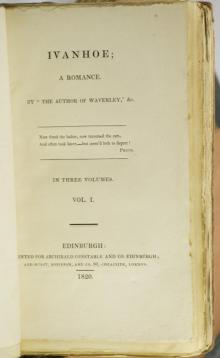 Ivanhoe: A Romance
Ivanhoe: A Romance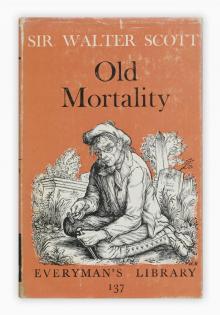 Old Mortality, Complete
Old Mortality, Complete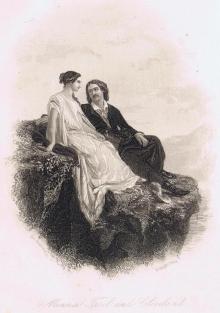 The Pirate
The Pirate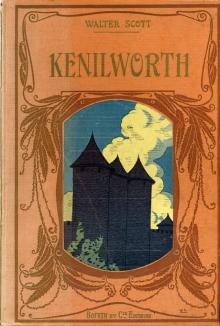 Kenilworth
Kenilworth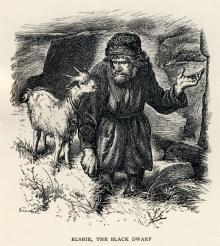 The Black Dwarf
The Black Dwarf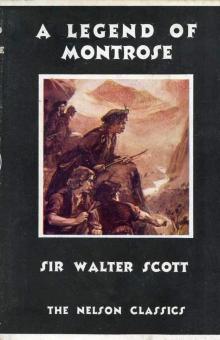 A Legend of Montrose
A Legend of Montrose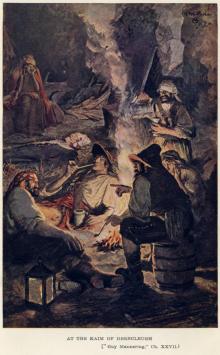 The Monastery
The Monastery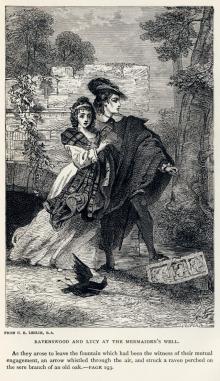 The Bride of Lammermoor
The Bride of Lammermoor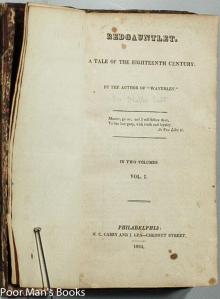 Redgauntlet: A Tale Of The Eighteenth Century
Redgauntlet: A Tale Of The Eighteenth Century St. Ronan's Well
St. Ronan's Well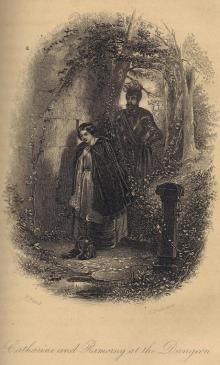 The Fair Maid of Perth; Or, St. Valentine's Day
The Fair Maid of Perth; Or, St. Valentine's Day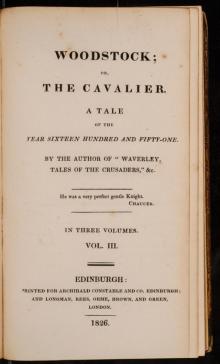 Woodstock; or, the Cavalier
Woodstock; or, the Cavalier_preview.jpg) Anne of Geierstein; Or, The Maiden of the Mist. Volume 1 (of 2)
Anne of Geierstein; Or, The Maiden of the Mist. Volume 1 (of 2)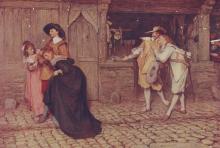 Peveril of the Peak
Peveril of the Peak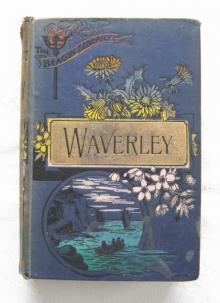 Waverley; Or, 'Tis Sixty Years Since
Waverley; Or, 'Tis Sixty Years Since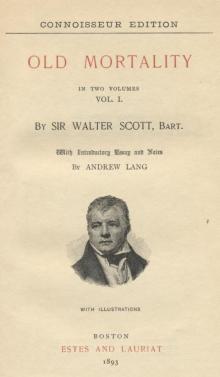 Old Mortality, Volume 1.
Old Mortality, Volume 1. Waverley Novels — Volume 12
Waverley Novels — Volume 12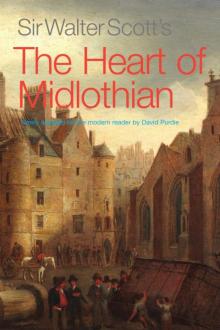 The Heart of Mid-Lothian, Complete
The Heart of Mid-Lothian, Complete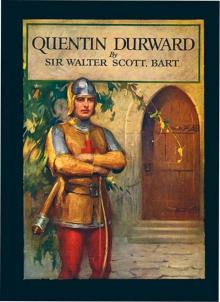 Quentin Durward
Quentin Durward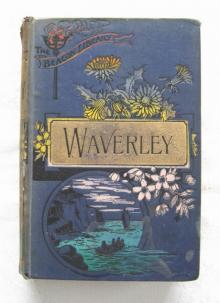 Waverley; Or 'Tis Sixty Years Since — Complete
Waverley; Or 'Tis Sixty Years Since — Complete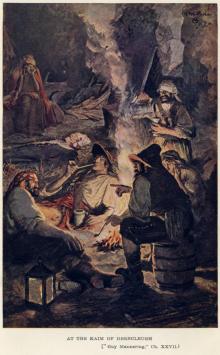 Guy Mannering; or, The Astrologer — Complete
Guy Mannering; or, The Astrologer — Complete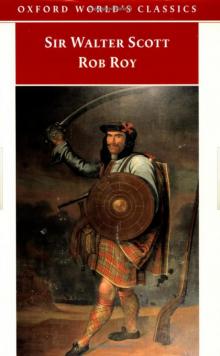 Rob Roy — Complete
Rob Roy — Complete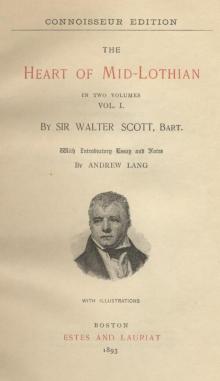 The Heart of Mid-Lothian, Volume 2
The Heart of Mid-Lothian, Volume 2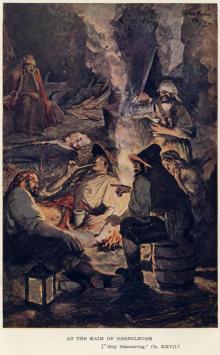 Guy Mannering, Or, the Astrologer — Complete
Guy Mannering, Or, the Astrologer — Complete_preview.jpg) Anne of Geierstein; Or, The Maiden of the Mist. Volume 2 (of 2)
Anne of Geierstein; Or, The Maiden of the Mist. Volume 2 (of 2)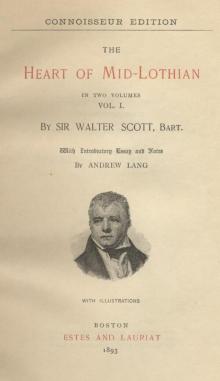 The Heart of Mid-Lothian, Volume 1
The Heart of Mid-Lothian, Volume 1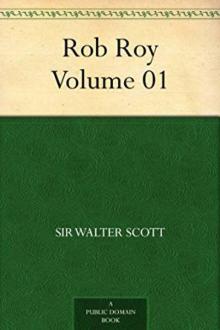 Rob Roy — Volume 01
Rob Roy — Volume 01 Waverley; Or, 'Tis Sixty Years Since — Volume 2
Waverley; Or, 'Tis Sixty Years Since — Volume 2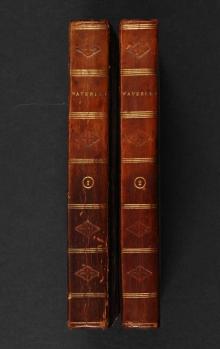 Waverley; Or, 'Tis Sixty Years Since — Volume 1
Waverley; Or, 'Tis Sixty Years Since — Volume 1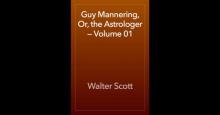 Guy Mannering, Or, the Astrologer — Volume 01
Guy Mannering, Or, the Astrologer — Volume 01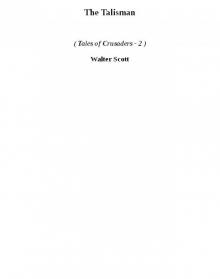 The Talisman toc-2
The Talisman toc-2 Rob Roy
Rob Roy Old Mortality, Volume 2.
Old Mortality, Volume 2. The Betrothed
The Betrothed Waverley
Waverley The Surgeon's Daughter
The Surgeon's Daughter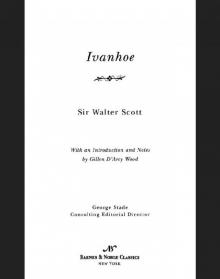 Ivanhoe (Barnes & Noble Classics Series)
Ivanhoe (Barnes & Noble Classics Series)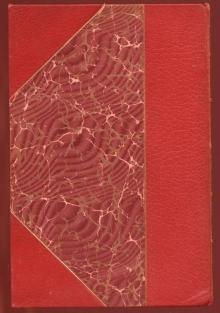 The Antiquary
The Antiquary Letters on Demonology and Witchcraft
Letters on Demonology and Witchcraft Trial of Duncan Terig
Trial of Duncan Terig Redgauntlet
Redgauntlet My Aunt Margaret's Mirror
My Aunt Margaret's Mirror Guy Mannering or The Astrologer
Guy Mannering or The Astrologer Marmion
Marmion The Tapestried Chamber, and Death of the Laird's Jock
The Tapestried Chamber, and Death of the Laird's Jock Chronicles of the Canongate
Chronicles of the Canongate The Fair Maid of Perth or St. Valentine's Day
The Fair Maid of Perth or St. Valentine's Day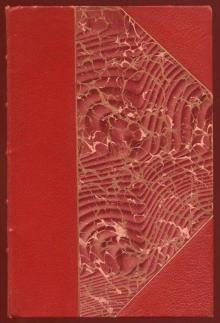 The Heart of Mid-Lothian
The Heart of Mid-Lothian Lady of the Lake
Lady of the Lake